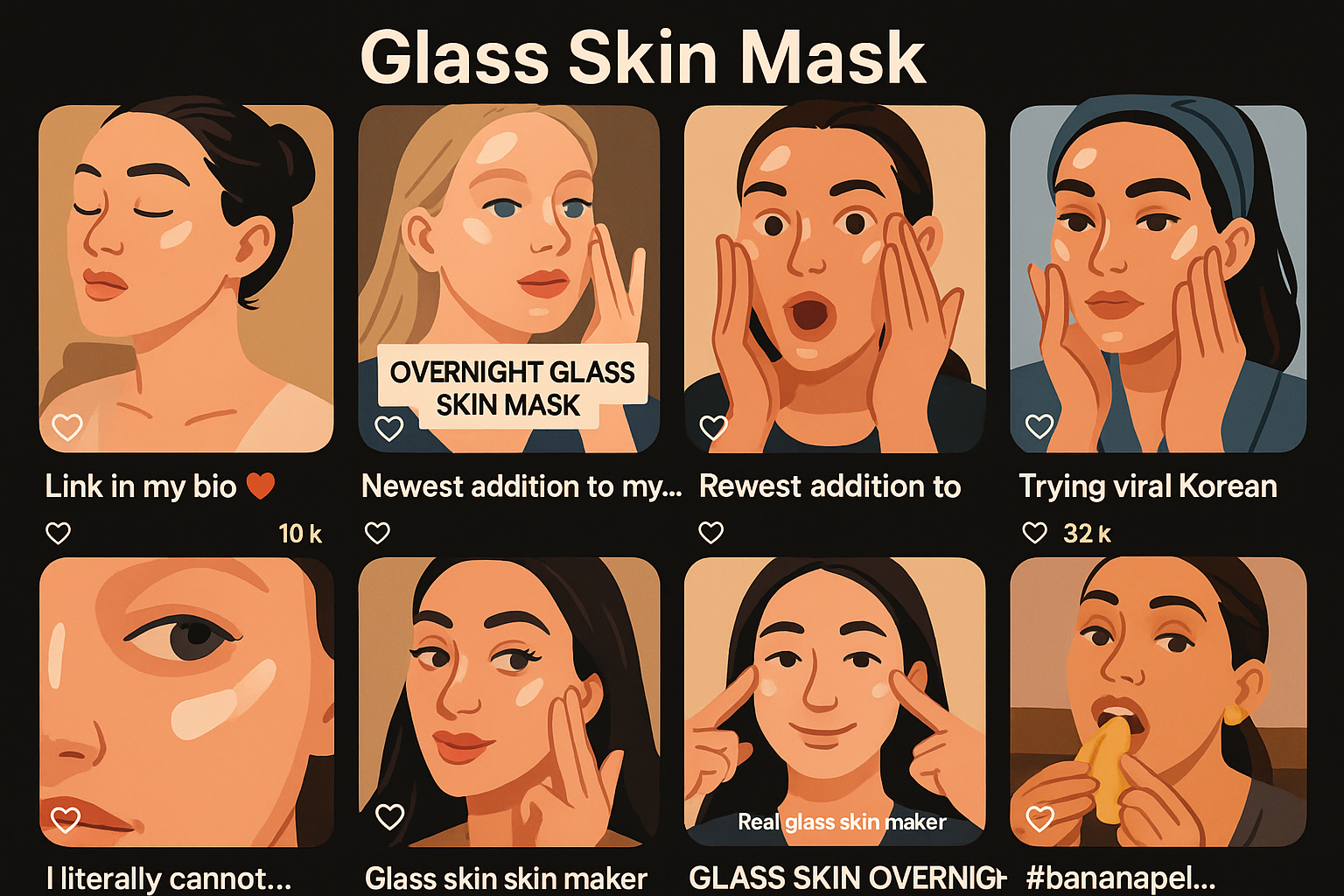Bonjour, beautiful souls! In my fifteen years of practicing dermatology in the heart of Paris, I've witnessed countless debates in my clinic that remind me of the passionate discussions at our local marché—"Should I choose the perfectly ripe Camembert or the aged Roquefort?" Today, we face a similar delicious dilemma in skincare: the great niacinamide vs vitamin c debate. Both ingredients are absolute stars of the skincare world, but like choosing between a vintage Bordeaux and a crisp Champagne, the answer depends entirely on the occasion, your skin's needs, and—most importantly—how these precious ingredients are formulated.
 The Tale of Two Skincare Superstars
The Tale of Two Skincare Superstars
Imagine niacinamide and vitamin C as two exceptional Parisian women, each with her own distinctive charm and approach to life. Niacinamide, our mademoiselle vitamin B3, is like that effortlessly chic friend who never seems flustered—she's reliable, gentle, and somehow makes everything look better without anyone quite knowing how she does it. She's the type who can smooth over any social situation, reduce drama, and leave everyone feeling more balanced and harmonious.
Vitamin C, on the other hand, is like that brilliant, slightly temperamental artist who lives in Montmartre—absolutely stunning when she's at her best, capable of creating the most luminous masterpieces, but requiring very specific conditions to truly shine. She's dramatic, powerful, and when properly handled, can transform your skin like morning light streaming through the windows of Notre-Dame.
This ingredient comparison goes far deeper than simple preference—it's about understanding how French skincare formulations harness the unique properties of each ingredient to create products that deliver exceptional results. C'est fascinant, vraiment!
Niacinamide: The Gentle Diplomat of Skincare
In the world of french skincare science, niacinamide has earned a reputation as what I lovingly call "the diplomat." This remarkable form of vitamin B3 works like a skilled mediateur, smoothing tensions between different skin processes and creating harmony where there was once chaos. Unlike some ingredients that announce their presence with dramatic flourishes, niacinamide works quietly behind the scenes, much like the best French maids who maintain a château without anyone noticing their presence.
The ingredient efficacy of niacinamide lies in its incredible versatility. It's like having a Swiss Army knife in your skincare arsenal—one tool, multiple functions. This wonder ingredient regulates sebum production like a skilled maître d' managing reservations at a busy brasserie, ensuring everything runs smoothly without overcrowding. For my patients with oily or combination skin, niacinamide is often my first recommendation because it addresses multiple concerns simultaneously: enlarged pores, excess shine, uneven texture, and inflammation.
What makes French formulations particularly brilliant is how we've learned to optimize niacinamide's concentration. While many international brands throw high percentages at problems like paint at a wall, we've discovered that 5-10% niacinamide delivers optimal results without irritation. It's the skincare equivalent of perfect seasoning—enough to enhance the dish without overwhelming the palate. Our formulation technology focuses on creating stable, pH-balanced environments where niacinamide can perform its multiple functions simultaneously.
 Vitamin C: The Radiant Revolutionary
Vitamin C: The Radiant Revolutionary
Ah, la vitamine C! If niacinamide is our diplomatic friend, then vitamin C is our passionate revolutionary—brilliant, transformative, but requiring careful handling to reach her full potential. In my laboratory, we treat vitamin C with the same respect French chefs show to a perfect soufflé: one wrong move, and all that potential magnificence can collapse.
The challenge with vitamin C lies not in its effectiveness—mon Dieu, when properly formulated, it's absolutely miraculous—but in its stability. L-ascorbic acid, the most potent form of vitamin C, is like a temperamental opera singer who can only perform under very specific conditions. Too much light, air, or heat, and she loses her voice entirely. This is where French skincare formulations truly excel, employing sophisticated packaging and stabilization techniques that would make a master perfumer weep with joy.
We've developed several approaches to taming this beautiful beast. Some of our most innovative products use magnesium ascorbyl phosphate or sodium ascorbyl phosphate—more stable vitamin C derivatives that convert to pure vitamin C once they penetrate the skin. It's rather like sending a diplomatic message in code: the real meaning is revealed only when it reaches its intended destination.
The Great Concentration Conundrum
One of the most frequent questions in my practice involves concentration—"Docteur, should I use 10% niacinamide or 20% vitamin C?" Mon dieu, if only skincare were that simple! The truth is, higher concentrations don't always translate to better results, much like how a more expensive wine isn't necessarily more enjoyable.
For niacinamide, our french skincare science has shown that the sweet spot lies between 5-10%. Beyond this concentration, you're not gaining additional benefits, and you might actually experience irritation. It's like adding too much salt to a perfectly balanced ratatouille—more isn't better, it's destructive to the harmony of the whole dish.
Vitamin C requires an even more nuanced approach. L-ascorbic acid can be effective at concentrations as low as 10%, but many people can tolerate and benefit from 15-20%. However, the delivery system matters enormously. A poorly formulated 20% vitamin C serum might deliver less actual vitamin C to your skin cells than a brilliantly crafted 10% formula. It's the difference between shouting across a crowded marketplace and whispering directly into someone's ear—effectiveness isn't always about volume.
 The Art of French Formulation Technology
The Art of French Formulation Technology
What sets French skincare formulations apart in this niacinamide vs vitamin c discussion is our approach to what I call "intelligent compatibility." We don't simply focus on one star ingredient; we create supporting casts that enhance the leading performer's abilities while covering for their weaknesses.
For niacinamide formulations, we often incorporate complementary ingredients like zinc (for additional oil control), hyaluronic acid (for hydration), or ceramides (for barrier support). These combinations work like a perfectly choreographed ballet—each dancer supports the others while maintaining their individual excellence. The result is products that address multiple skin concerns simultaneously without overwhelming the skin.
Our vitamin C formulations employ equally sophisticated strategies. We might combine L-ascorbic acid with vitamin E and ferulic acid—a trio that works together like the three musketeers, each making the others stronger and more stable. Some of our most innovative products use time-release encapsulation technology, delivering vitamin C gradually throughout the day like a slow-release perfume that continues to delight hours after application.
Layering: The French Art of Skincare Harmony
Mes chères amies, one of the most persistent myths I encounter is that niacinamide and vitamin C cannot be used together. Quelle tragédie! This misconception has prevented so many people from experiencing the benefits of both ingredients. The truth is, when properly formulated and applied with understanding, these two ingredients can work together beautifully, like a perfectly paired wine and cheese.
The key lies in understanding pH requirements and application timing. Vitamin C (particularly L-ascorbic acid) performs best in a more acidic environment (pH 3.5-4), while niacinamide is happy in a slightly more neutral range (pH 5-7). Rather than seeing this as a conflict, French formulation technology embraces it as an opportunity for layering strategies.
I often recommend applying vitamin C in the morning—its antioxidant properties provide excellent protection against environmental damage, like a sophisticated umbrella shielding you from the harsh Parisian sun. Niacinamide can be applied morning or evening, or even in products designed to work synergistically with vitamin C through careful pH buffering and ingredient selection.
 Addressing Different Skin Concerns
Addressing Different Skin Concerns
The beauty of having both niacinamide and vitamin C in your skincare arsenal is that they excel at addressing different concerns, often in complementary ways. For my patients dealing with hyperpigmentation, I might recommend a morning vitamin C serum for its brightening and protective properties, paired with an evening niacinamide treatment to regulate cell turnover and reduce inflammation that can worsen discoloration.
For those struggling with aging concerns, vitamin C's collagen-stimulating properties work beautifully during the day when paired with Mineral SPF, while niacinamide's ability to improve skin texture and reduce the appearance of fine lines makes it perfect for evening application. It's like having a day shift and night shift of skincare workers, each optimized for their specific duties.
Acne-prone skin particularly benefits from niacinamide's anti-inflammatory and sebum-regulating properties, while vitamin C can help fade post-acne marks and provide antioxidant protection. Together, they create a comprehensive approach to both treating active breakouts and preventing future ones.
The Verdict: Pourquoi Choisir?
After fifteen years of studying, formulating, and prescribing these remarkable ingredients, my conclusion might surprise you: why choose at all? The niacinamide vs vitamin c debate assumes we must pick sides, but the most beautiful skincare routines—like the most memorable French meals—incorporate multiple excellent elements that complement each other perfectly.
The key lies in choosing high-quality french skincare formulations that respect each ingredient's unique properties while maximizing their individual strengths. Look for products that demonstrate understanding of pH requirements, stability concerns, and intelligent ingredient pairing. A well-formulated vitamin C serum should feel stable and potent without causing irritation, while an excellent niacinamide product should deliver multiple benefits with elegant simplicity.
En fin, the best ingredient is the one that's properly formulated, correctly applied, and consistently used. Whether you choose the gentle diplomacy of niacinamide, the radiant power of vitamin C, or the sophisticated combination of both, success lies in understanding these ingredients' unique personalities and giving them the respect they deserve.
As we say in France, "La beauté est dans les détails"—beauty lies in the details. And in skincare, those details matter more than any single ingredient ever could. Choose formulations that honor the science, respect your skin's needs, and remember that the most beautiful results come from patience, consistency, and a deep appreciation for the artistry of excellent skincare.
Santé to your skin's health and radiance!
📚 Continue Reading

"Debunking Viral TikTok Skincare Trends Coffe Scrubs, Ice Facials, and the Baking Soda Facial"
The Bonjout Beauty blog post debunks several popular TikTok skincare trends, highlighting their potential harm and offering evidence-based alternatives.

Top 10 TikTok Skincare Trends Science vs. Hype: A Dermatological Analysis of Viral Skincare Sensations
The Bonjout Beauty blog post analyzes ten trending TikTok skincare hacks, separating scientifically-backed beneficial practices from potentially harmful fads using a dermatologist's perspective.

French Regional Skincare Traditions: From Provence to Paris
The blog post explores the diverse skincare traditions across different French regions, highlighting unique ingredients and practices from Provence to Paris.

